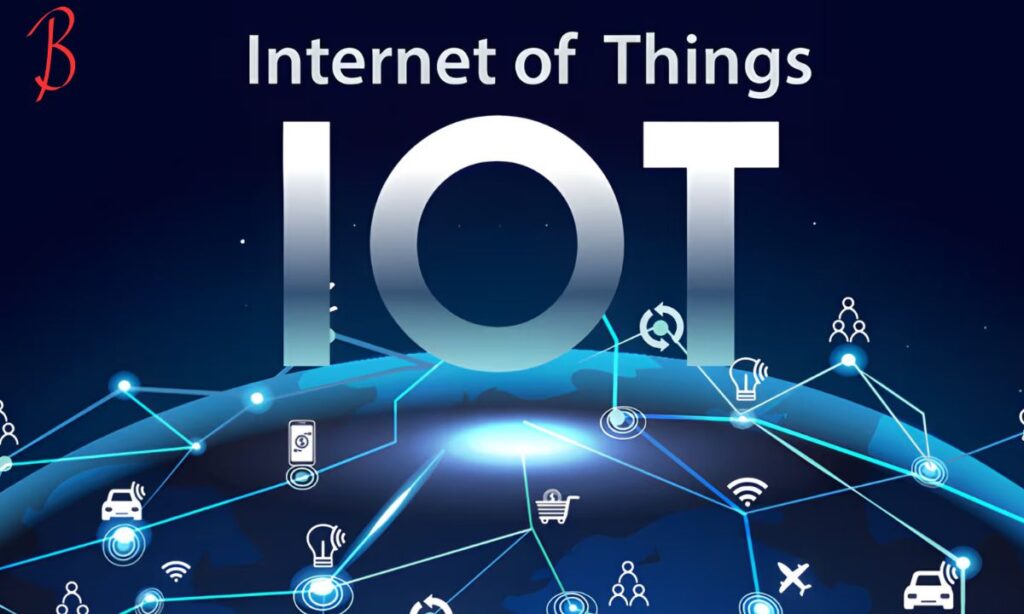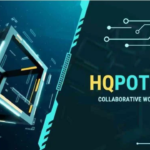The Internet of Things (IoT) is a realm of endless possibilities. It connects devices, enabling them to communicate and share data. This technology has evolved rapidly in recent years. Every device, from smart homes to industrial machinery, plays a role. The journey of IoT can be visualized as a growth process. It starts as a small sprout and, with nurturing, grows into a majestic sequoia.
from sprout to sequoia: orchestrating the symphony of IoT growth. We will break down each phase of development. We will also discuss the challenges faced along the way. Finally, we will look at future trends shaping the IoT landscape. Understanding this journey is crucial for businesses and innovators.
Understanding IoT: The Sprout Phase
The sprout phase is where ideas begin to take shape. It is the starting point of every IoT device. During this phase, the focus is on prototyping and validation. Innovators test their concepts and gather initial feedback. This is a critical step in determining the feasibility of an idea.
In this phase, several key elements come into play. First, the identification of use cases is essential. This helps in understanding the problem the device will solve. Next, technical feasibility must be assessed. This ensures that the technology can support the intended functions. Lastly, user feedback is vital for refining the design.
Prototype Development
Prototype development is the cornerstone of the sprout phase. It involves creating a basic version of the IoT device. This prototype allows innovators to test their ideas in real-world scenarios. Feedback from users helps identify strengths and weaknesses. This iterative process is crucial for improvement.
During prototype development, it’s important to focus on key features. These features should align with user needs and expectations. The goal is to create a functional model that effectively addresses the problem. This phase lays the groundwork for future development.
Connectivity and Communication Protocols
Connectivity is another vital aspect of the sprout phase. Devices must communicate effectively to function properly. Choosing the right communication protocol is crucial. Options include MQTT, CoAP, and HTTP. Each protocol has its own advantages and limitations.
MQTT is lightweight and efficient for low-bandwidth situations. It is ideal for applications where data transmission is critical. CoAP is designed for simple devices with limited resources. HTTP is a standard but may not suit all IoT applications. Selecting the right protocol impacts scalability and performance.
Initial Data Collection and Analysis
Data collection begins early in the IoT journey. In the sprout phase, initial data helps validate the concept. This data provides insights into user interactions and device performance. Analyzing this information is essential for making improvements.
The data collected can guide future development. It helps identify trends and user preferences. This also informs decisions about necessary features and functionalities. Effective data analysis is crucial for refining the product.
Scaling to Growth: Transitioning to the Tree Phase

As an IoT device gains traction, it enters the growth phase. This transition marks a critical shift. The focus now is on scaling production and enhancing features. Organizations must adapt to increased demand and user expectations.
In this phase, several key components come into play. Manufacturing and production processes need optimization. Enhanced connectivity becomes essential as more devices come online. Additionally, effective data management solutions are critical for handling increased data volumes.
Manufacturing and Production
Manufacturing becomes a key focus during the growth phase. As demand rises, organizations must scale production effectively. This involves securing a reliable supply chain. A robust supply chain helps avoid delays in production.
Quality assurance is also essential in this phase. Implementing testing protocols ensures that products meet quality standards. This is crucial for maintaining customer satisfaction. Organizations must balance speed and quality to succeed.
Enhanced Connectivity
With more devices coming online, enhanced connectivity is vital. Mesh networking allows devices to communicate directly. This reduces reliance on central hubs and improves reliability. Edge computing is another important aspect of connectivity.
Edge computing processes data closer to the source. This reduces latency and bandwidth usage. By leveraging edge computing, organizations can improve performance. Enhanced connectivity is crucial for supporting a growing IoT ecosystem.
Data Management and Storage Solutions
The growth phase sees an exponential increase in data generation. Effective data management solutions become critical. Organizations must choose between data lakes and data warehouses. Each option serves different storage needs.
Real-time processing tools are essential for managing data. Technologies like Apache Kafka enable efficient data analysis. Organizations must implement robust solutions to handle increased data volumes. Effective data management supports better decision-making.
Read This Blog: Your Ultimate Guide to Navigating Crypto Business with Crypto Businessnewstips.com
Reaching the Sequoia Stage: Ensuring Cloud Scalability
The sequoia stage represents maturity in the IoT journey. Here, systems must be robust and scalable. Cloud infrastructure plays a vital role in achieving this. A well-designed cloud architecture is foundational for scalability.
In this phase, several key components must be considered. Cloud architecture design is crucial for flexibility. Scalable storage solutions must accommodate growing data volumes. Additionally, security and compliance are paramount for protecting user data.
Cloud Architecture Design
Designing a scalable cloud architecture is essential. A microservices architecture enhances flexibility. This allows for independent deployment of services. Organizations can respond quickly to changing demands.
Serverless computing is another important aspect. It automates resource scaling based on demand. This ensures efficient resource allocation. A well-thought-out architecture supports long-term growth.
Scalable Storage Solutions
As data accumulates, ensuring scalable storage becomes vital. Object storage solutions like Amazon S3 are effective for managing unstructured data. NoSQL databases provide high-velocity data management. Organizations must choose solutions that align with their needs.
Scalable storage solutions support growth and innovation. They allow organizations to store and analyze large volumes of data. Effective storage management is essential for 9.
Security and Compliance
Security becomes paramount at the sequoia stage. Organizations must implement end-to-end encryption. Protecting data at rest and in transit is crucial for user trust. Regular audits ensure compliance with regulations.
Compliance with standards like GDPR and HIPAA is essential. Organizations must stay informed about changing laws. This helps mitigate risks and ensures operational legitimacy. Security and compliance are critical for sustaining growth.
Performance Monitoring and Management
Continuous performance monitoring is necessary for success. Organizations must track performance metrics in real-time. Tools like Grafana help visualize data effectively. This enables proactive decision-making and optimization.
Automated scaling is another important aspect. Cloud providers offer tools to allocate resources based on demand. This ensures efficient resource management. Performance monitoring supports overall system efficiency.
Challenges in Orchestrating IoT Growth

The journey from sprout to sequoia is not without challenges. Organizations face various obstacles that can hinder growth. Understanding these challenges is crucial for developing effective strategies.
Several common challenges arise during the IoT journey. Interoperability issues can complicate integration efforts. Data overload can overwhelm traditional processing systems. Security vulnerabilities pose significant risks. Lastly, regulatory compliance can be a complex landscape.
Interoperability Issues
Interoperability is a common challenge in IoT. Diverse devices often use different protocols. This can complicate integration efforts. Organizations must find ways to bridge these gaps.
Ensuring seamless communication between devices is essential. Standardizing protocols can help improve interoperability. Collaboration among manufacturers is also important. This fosters a more cohesive IoT ecosystem.
Data Overload
As IoT devices generate vast amounts of data, data overload becomes a challenge. Traditional data processing systems may struggle to keep up. Organizations must implement advanced analytics strategies.
Effective data management solutions are critical for success. Utilizing cloud computing can help alleviate data overload. This allows for more efficient storage and processing capabilities. Managing data effectively supports better decision-making.
Security Vulnerabilities
The interconnected nature of IoT increases security vulnerabilities. More entry points can lead to cyberattacks. Organizations must prioritize security measures throughout development.
Implementing strong security practices is essential. This includes end-to-end encryption and regular audits. Organizations must stay vigilant against emerging threats. Protecting user data is crucial for maintaining trust.
Regulatory Compliance
Regulatory compliance can be complex and challenging. Organizations must keep up with evolving laws and standards. This requires ongoing education and adaptation.
Staying informed about regulatory changes is essential. Compliance helps mitigate risks and ensures operational legitimacy. Organizations must prioritize compliance efforts to succeed in the IoT landscape.
Read This Blog: Money 6X REIT Holdings: A Guide to Smart Real Estate Investing
Future Trends in IoT and Cloud Scalability
As technology continues to evolve, several trends are shaping the future of IoT. These trends present new opportunities and challenges. Understanding these developments is crucial for staying competitive.
Several key trends are emerging in the IoT landscape. Integration of AI and machine learning will enhance capabilities. The rollout of 5G connectivity will revolutionize IoT applications. Sustainable IoT solutions will address environmental concerns. Finally, decentralized IoT systems will improve security and data integrity.
AI and Machine Learning Integration
Integrating AI and machine learning into IoT systems is a game-changer. These technologies enhance data processing and analysis. They enable predictive maintenance and optimize resource usage.
AI can analyze vast amounts of data generated by IoT devices. This leads to actionable insights and improved decision-making. Organizations that leverage AI will gain a competitive edge. The integration of AI will shape the future of IoT.
5G Connectivity
The rollout of 5G networks will significantly impact IoT. Higher speeds and lower latency will enable real-time data transmission. This will support a new generation of applications and devices.
5G connectivity will enhance the functionality of IoT systems. It will allow for greater device density and improved performance. Organizations must prepare for the changes brought by 5G. This technology will redefine the IoT landscape.
Sustainable IoT Solutions
Sustainability is becoming a priority in IoT development. Environmental concerns are driving the shift toward sustainable solutions. Organizations are focusing on energy-efficient devices and practices.
Sustainable IoT solutions include green data centers and circular economy practices. These innovations reduce electronic waste and environmental impact. Embracing sustainability will be crucial for future success in IoT.
Decentralized IoT Systems
Decentralized IoT systems are gaining traction. Blockchain technology is paving the way for these systems. Decentralization enhances security and improves data integrity.
By reducing reliance on central authorities, organizations can minimize risks. Decentralized models also enable new business opportunities. This trend will shape the future of IoT ecosystems.
Frequently Asked Questions
What is IoT?
IoT is a network of physical devices that connect and exchange data.
What are the phases of IoT development?
The phases are the sprout phase, growth phase, and sequoia stage.
What challenges do organizations face in IoT?
Challenges include interoperability, data overload, security vulnerabilities, and regulatory compliance.
How can organizations ensure cloud scalability for IoT?
Organizations can ensure scalability through microservices architecture and serverless computing.
What role does AI play in IoT?
AI enhances IoT capabilities by improving data analysis and predictive maintenance.
What is the importance of 5G in IoT?
5G provides higher speeds and lower latency, enabling real-time applications.
How do sustainable practices impact IoT?
Sustainable practices promote energy efficiency and reduce environmental impact.
What are decentralized IoT systems?
Decentralized systems use blockchain technology to enhance security and data integrity.
Why is performance monitoring important in IoT?
Performance monitoring ensures efficiency and helps identify potential issues proactively.
How can organizations address interoperability issues?
Organizations can standardize protocols and encourage collaboration among manufacturers.
Conclusion
The journey from sprout to sequoia: orchestrating the symphony of IoT growth is complex. Organizations must navigate various phases and challenges. Understanding these stages is crucial for cultivating robust IoT ecosystems. The potential of IoT to reshape industries is immense. With strategic planning and execution, businesses can thrive in the digital age.






